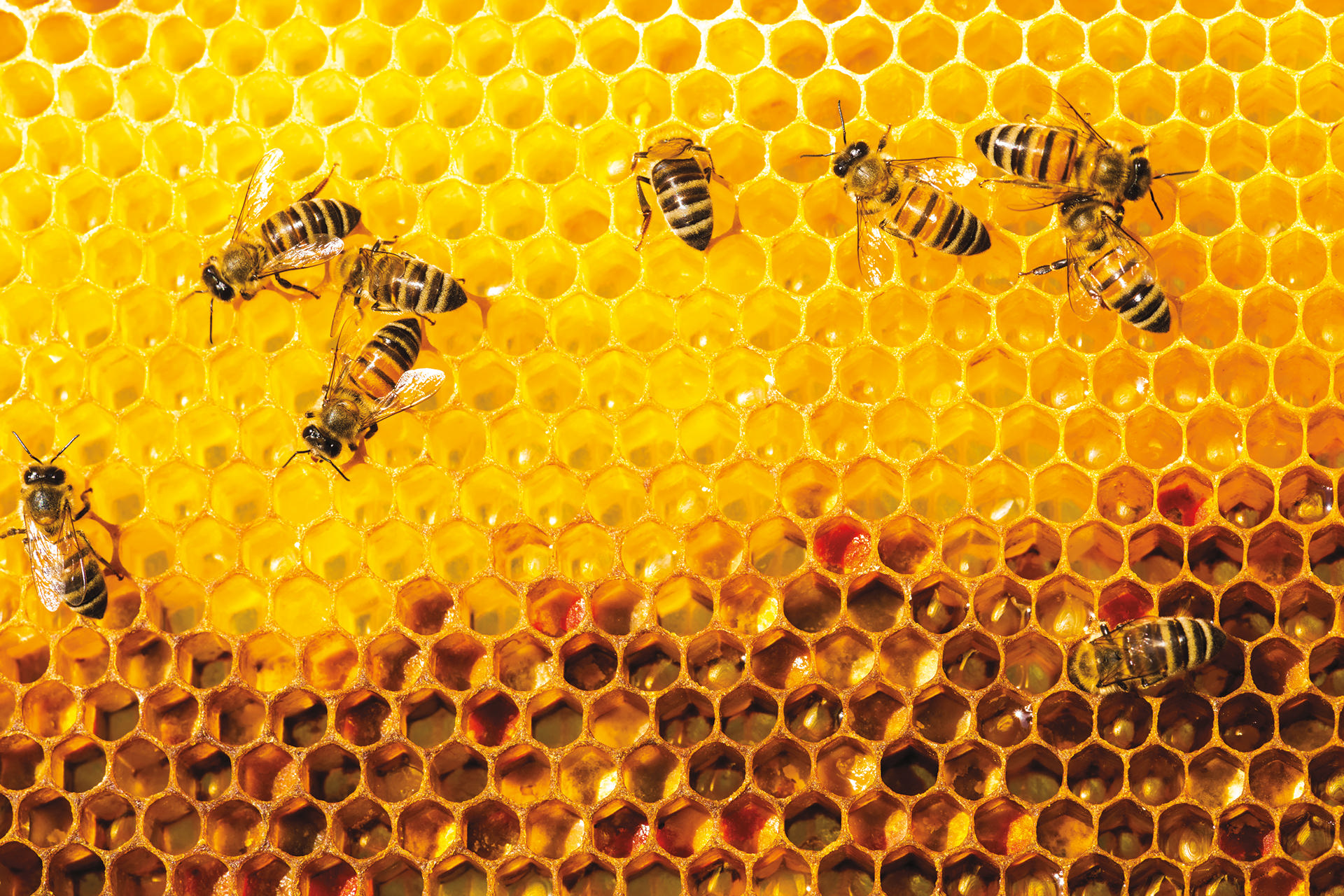

The Birds and the Bees
By Laren (Weber) Kowalczyk '07
Growing up, most people are afraid of – or at least intimidated by – bees. Once they start buzzing around, our natural inclination is to swat them away. If that fails, the fear of being stung is often enough to make us take off running, arms flailing in the air in an attempt to ward off the bees.
Before my husband, Chris Kowalczyk ’07, and I started our beekeeping journey, we were probably like most of you. We didn’t know much about bees and were relatively afraid of the little creatures, cringing and swatting at them when they came near. And to be honest, the bees still intimidate us. The sound of 20,000 bees swarming around you and dive-bombing your head during a hive inspection, even while wearing a protective bee suit, still is nerve-wracking.
But we understand them more now, and we have a great respect for these smart little insects that are so integral to our lives.

Consider this:
• Bees pollinate nearly one of every three bites of food we eat.
• It’s estimated that bees pollinate more than $15 billion in U.S. crops a year.
• Honeybees produce about $150 million in honey annually.
Sadly, honeybees are in trouble and they have been for a while. In 2016 alone, 44 percent of bee colonies collapsed. The total number of honeybee colonies has dropped to about 2.5 million, down from more than 4 million in the 1970s. There are several reasons for the decline, including loss of habitat, pesticide use and mite infestations.
Scientists now also believe that much of the decline is due to Colony Collapse Disorder (CCD) , which refers to the unexplained disappearance and dying of honeybee colonies. Not a lot is known about CCD, which is worrisome.
A bit of good news, though, is the recent rise in the number of part-time and backyard beekeepers. There are now an estimated 120,000 backyard beekeepers in the United States.

And as of 2016, Chris and I are now among them. Neither of us has any background in beekeeping or agriculture. As a matter of fact, beekeeping is vastly different from our careers – Chris, a construction manager, and myself, a writer. We have bachelor’s degrees from Bowling Green State University, are Falcon Flames and have three beautiful children – two boys and a girl.
Our decision to join the movement was motivated not only by our fascination with bees but also by a desire to carry on a family tradition. Chris’ late grandfather, Hank McCowan, was a beekeeper for most of his life. Growing up, Chris remembers going to his grandpa’s house in Avon, Ohio, and seeing his hives in the backyard. His four acres were a small paradise for the bees. He never used herbicides or pesticides on his property, preferring to let the wildflowers grow truly wild. Chris’ grandfather remained an active beekeeper until his late 80s. Most of his beekeeping equipment was sold to other local beekeepers, but one hive and a few essential beekeeping tools were saved in case anyone in the family wanted to carry on Hank’s tradition.
The Kowalczyks’ buzz on
bees:
• We raise Italian bees (they are less defensive and known to be better honey producers than the alternative subspecies: Russians and Carniolans).
• Chris has been stung three times – in the head, ankle and hand.
• Queen bees lay 1,500 eggs a day and typically serve as queen for two years. Either the beekeeper replaces her after two years or the hive replaces her by raising a new queen.
• Honeybees are the only bees that die after they sting. Drones don’t have stingers, and the queen won’t die.
Our beekeeping journey officially began in spring 2016. We set up Hank’s former hive at Chris’ mother’s house in Columbia Station — a rural suburb of Cleveland about 25 miles southwest of the city. At first, the bees seemed to be thriving. We harvested about 40 pounds of honey in late summer and gathered enough beeswax to start making soaps, lip balm and wood conditioner. Then, in early fall, we noticed something was awry. The hive seemed much less active than it had been, and some of the bees appeared disoriented and confused.
Soon, the hive was completely abandoned. We later learned our bees had fallen victim to varroa mites – external parasites that attack both the honeybees and their brood. We now know that left untreated, varroa mites will destroy a hive. A recent study conducted by the University of Maryland and U.S. Department of Agriculture also found that the varroa mite is far more abundant than previous estimates indicated, and is a particularly challenging problem among backyard beekeepers (those who manage fewer than 50 colonies).
Another essential lesson learned during our first year as beekeepers: Never inspect a hive if there is a tear in your bee suit. The bees will find their way in, resulting in you ripping off your suit and running for cover while screaming and flailing your arms like you’re on fire.
This past winter, Chris, who also does woodworking in his spare time, built a second hive. We received two packages of bees this spring and now have two functioning hives – each of which can contain anywhere between 20,000 and 60,000 bees. We have plans to add additional hives in the future – once life settles down a bit. Although our contribution to the honeybee population may be small, we revel in the fact that we are doing what we can to strengthen the population.
Updated: 12/21/2017 04:25PM
